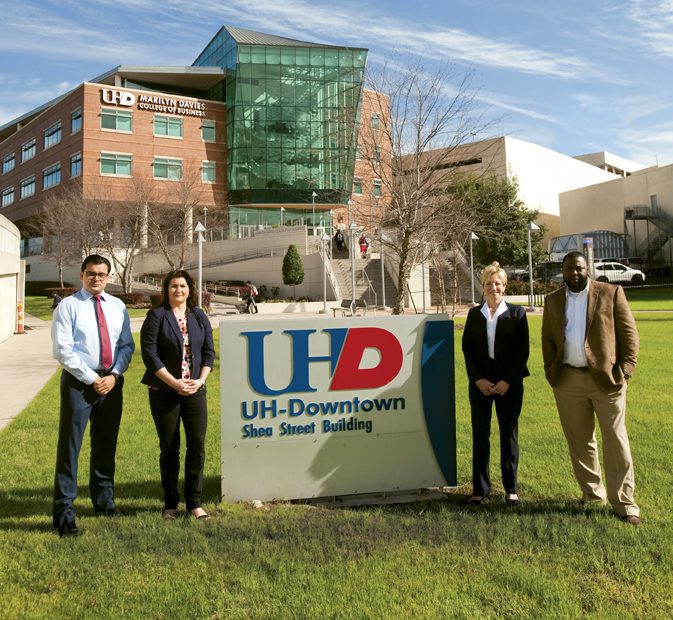“Failure to educate” a growing source of claims
While reports of violence and abuse in schools may dominate the headlines, such incidents are not the leading or fastest growing source of liability claims for schools and educational institutions.
Insurance professionals who provide liability coverage to public, private, and charter schools find that the fastest growing type of claim alleges that an educational institution failed in its core duty: to educate a child.
“Failure to educate” is a rising cause of action against school systems, according to Ned Daly, vice president of Professional Governmental Underwriters (PGU), a managing general underwriter that markets and administers programs offering management (D&O), professional (E&O), and employment practices liability coverage for school systems and educational institutions.
“Parents might sue to get their children into special ed, and they might sue to get them out of special ed. A school administrator or board does not need to do anything wrong to get sued.”
—Ned Daly
Vice President
Professional Governmental Underwriters
In particular, the leading source of liability claims against K-12 schools is from “individual education plans,” says Mae Fulkerson, senior vice president of McGowan Governmental Underwriters, a branch of McGowan & Co., a wholesale broker and program administrator.
Commonly known as “IEPs,” these plans are developed by schools for individual students identified as having unique learning needs.
IEPs are mandated under the Individuals with Disabilities Education Act (IDEA), a federal law designed to ensure that children with disabilities have access to a “free appropriate public education.” Under the law, parents have rights to be consulted regarding their child’s educational program, inspect relevant records, disagree with school decisions, obtain independent evaluations, and use mechanisms provided under IDEA to resolve disputes.
According to Fulkerson, “Expenses from these types of claims have become more prevalent over the past three to five years. It is a large expense burden that is driving up loss ratios.”
“Parents might sue to get their children into special ed, and they might sue to get them out of special ed,” says Daly. “A school administrator or board does not need to do anything wrong to get sued.”
To control losses from such claims, PGU urges its insureds (mostly K-12 schools) to:
- Notify the carrier immediately of any claim or complaint that might become a claim.
- Engage with concerned parents early in and throughout the process.
“Generally, this approach will mitigate disputes and make everybody happy, or at least satisfied,” Daly says. “Most ‘failure to educate’ claims don’t become major claims if the carrier’s claims personnel are involved early in the process.”
Expanded responsibility
School leaders also face growing liability for situations that occur outside of school.
The Hanover Insurance Group detects a trend in claims against school administrators when staff members fail to fulfill statutory obligations as “mandatory reporters” of child abuse and neglect, according to Robert Brewer, Hanover’s vice president of industry solutions.
“If a district follows a solid plan for applications, hiring, supervision, and terminations, the claims are less costly, as documentation is in place to assist with the defense of a claim.”
—Mae Fulkerson
Senior Vice President
McGowan Governmental Underwriters
Under federal law, teachers, school nurses, counselors, and other staff are required to make a report to authorities if they suspect a child is being abused, neglected, or subjected to conditions that would reasonably result in harm to the child. States have analogous laws with varying reporting requirements.
“A school administration can be found responsible without being grossly negligent or without pervasive abuse within the institution,” Brewer says. “Independent agents should include coverage that protects schools in such cases and stress to their school clients the importance of properly training staff.”
Brewer also cites a growing number of claims brought against elementary and secondary schools under Title IX of the federal Educational Amendments of 1972. Best known for its role in promoting women’s athletics, Title IX prohibits any school receiving federal funding from denying anyone the benefits of an educational program on the basis of gender.
“We find that insureds commonly fail to understand how to handle Title IX investigations,” Brewer says. “Agents who write educational institutions should have a strong understanding of Title IX and work to make sure their educators are properly covered.”
According to the U.S Office of Civil Rights, the number of Title IX claims alleging “sexual violence” that were brought against K-12 school—although small—increased eightfold between 2009 and 2016, from 11 to 83. Title IX complaints can extend to other areas of school policy and campus occurrences.
Good practices
As schools face a growing range of liabilities, Daly and Fulkerson find that, in general, K-12 schools and education systems have adopted good practices for addressing their liability exposures.
Fulkerson says that claims by teachers and other school employees for unlawful discrimination or employment practices have fallen off since the job market has improved. Such claims are more common in urban areas than in rural districts, she adds.
“If a district follows a solid plan for applications, hiring, supervision, and terminations,” she says, “the claims are less costly, as documentation is in place to assist with the defense of a claim.”
“A school administration can be found responsible without being grossly negligent or without pervasive abuse within the institution. Independent agents should include coverage that protects schools in such cases and stress to their school clients the importance ofproperly training staff.”
—Robert Brewer
Vice President of Industry Solutions
The Hanover Insurance Group
While employment-related claims constitute two-thirds of the education claims PGU sees, its carriers end up paying damages on less than half of them, according to Daly. “School districts are getting better at managing personnel,” he says. “Districts and administrators know you can’t treat people badly, and they know to call a lawyer before taking action against someone.”
Sound practices have been widely adopted for school finances as well, says Fulkerson, sometimes in the wake of well-publicized scandals. “With the heightened awareness, there’s been minimal claims activity for misuse of funds,” she says. “School finance officers are required to be bonded and are held accountable for misuse of funds by other employees.
“Also, the states audit their districts just about every year,” Fulkerson adds. “All findings are made public, and the media coverage of any wrongdoing could ruin a career and even lead to criminal charges.”
Maintaining balance
Schools will need all the professional dexterity they can muster to address the growing scrutiny of and publicity surrounding the conduct of teachers, coaches, and other school professionals, according to Daly.
When it comes to evaluating and disciplining staff members who interact with students, “administrators find themselves between a rock and a hard place,” he says.
“You may have parents who really like or dislike a particular teacher,” he adds. That’s nothing new. What is new is that yesterday’s whispering campaigns can now emerge into social media, increasing the pressure to act on “public” information, no matter how unfounded, or run the risk of being liable for ignoring a red flag.
This comes to a head when a school would prefer that a staff member leave but does not have hard evidence of wrongdoing on his or her part. If he or she seeks other employment, the school is faced with the choice of providing a favorable reference (to the extent warranted) or sharing concerns that are not fully substantiated.
“You almost can’t tell others what you know [about a former staff member] because you might get accused of libel or slander,” he says.
Soft and stable
Regarding conditions in the educational insurance market, Fulkerson says they have been “soft and stable” since the professional liability market strains of the mid-2000s.
Today, she says, there is a limited number of carriers in the market but with substantial capital, sound financial performance, underwriting and loss control expertise, and products developed to address unique exposures facing educators.
“Insureds continue to benefit from carriers that offer a suite of risk management solutions,” says Brewer. “We’re also seeing importance being placed on product suites that provide greater flexibility. This can help agents tailor coverage to the specific risk exposures of each education client.”
Agents and brokers who want to be active in this market “need to have expertise in this niche,” Fulkerson says. “You must have a strong, stable, durable carrier that will continue to insure the education sector and have a flexible program to meet the ever-changing needs of school districts.”
For more information:
The Hanover Insurance Group
www.hanover.com
McGowan Governmental Underwriters
www.mcgowancompanies.com
Professional Governmental Underwriters
www.pgui.com
The author
Joseph S. Harrington, CPCU, is an independent business writer specializing in property and casualty insurance coverages and operations. For 21 years, Joe was the communications directorfor the American Association of Insurance Services (AAIS), a P-C advisory organization. Prior to that, Joe worked in journalism and as a reporter and editor in financial services.
INSURANCE FOR VIOLENT ACTS GROWS IN RESPONSE TO SCHOOL SHOOTINGS
One can hardly imagine what went through the minds of school administrators and board members as citizens of Parkland, Florida, buried the victims of the Feb. 14, 2018 school shooting at Marjory Stoneman Douglas High School.
It pains one’s conscience to consider that the leaders of a school that had actively prepared for such an event nonetheless had to contemplate the possibility they might be sued for what they did and failed to do in advance of the event.
On that score, educators received some bittersweet news from a court in Lake County, Ohio.
Two days after the Parkland shooting, Ohio Judge John O’Donnell dismissed liability claims against five former school administrators by survivors of shooting victims, three of whom were killed, and one permanently disabled by a former student in 2012.
Although the outcome was a relief to the defendants, the length of the ruling (14 pages) and the detail it contains on the two-year court fight suggest that the trauma endures long after such an event.
As it turns out, the Ohio district had implemented and maintained security measures after a student was arrested with a gun in 2008, but that did not save the defendants from relentless scrutiny of every act they took or failed to take after that.
As for those who provide professional liability
insurance for school districts, board members, and administrators, “violent acts and active shooters are among the leading trends in new claims,” says Mae Fulkerson, senior vice president of McGowan Governmental Underwriters.
“Related to these violence claims, we see an increase in claims arising from bullying,” she adds. “Regardless of the outcome, expenses for these claims are costly.”
In light of the experience of school shootings, Fulkerson says that many school districts are seeing McGowan’s Active Shooter program (see the December 2016 issue of Rough Notes) as “a required coverage.”
Other carriers and program administrators have added coverage for extra expenses that arise from violent acts in schools. Among examples of these are:
- Liberty Mutual’s “Violent Event Response Coverage”
- The Hartford’s inclusion of violent acts under its “Crisis Management Expense Reimbursement” coverage The “School Violent Events” coverage available to private, public, and charter schools from Glatfelter Insurance Group.
Insurance considerations loom large as the nation debates a response to the Parkland shooting and similar incidents. In particular, some carriers that insure school districts have reportedly balked at proposals to have armed teachers as a component of school safety policies.






